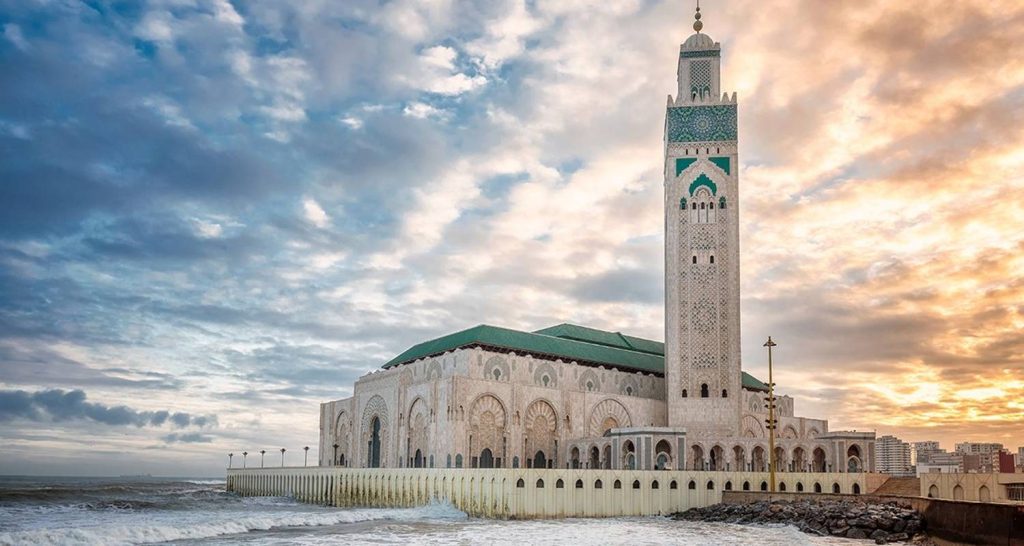This city is a surprise for those who have been fed with picturesque images of Marrakech and fez. For here is a modern city, with a skyline dominated by towering office blocks and sprawling suburbs ringed in the approved metropolitan style by a motorway ring road. The streets are jammed with cars and the five-storey apartment block is the dominant housing motif. The pavements are filled with elegant besuited figures.
Casablanca dominates the national economy, it is the chief port, the financial, industrial, commercial and manufacturing centre of the kingdom. This has all been achieved within this century from a town of 20.000 in 1900; the Casablanca conurbation is now home to 3.500.000. In North Africa only Cairo can compete with Casa in growth, verve and vibrancy, but this city facing out to the Atlantic that seems the more oriented to the international pattern of trade and sympathetic to western influences. At time, as you cruise down a palm fringed car-packed boulevard to catch glimpses of the sun setting in a western ocean, you could be mistaken for thinking yourself in California.
The French administration must be credited with much of this achievement. They carefully planned the new Atlantic face of Morocco in their own image, while allowing the xenophobic cities of the interior to wither into mere historical monuments. The fusion of cultures, Moroccan and French, seems so complete and intricate here that one can easily forget that the battle for independence was chiefly fought on the streets of Casablanca. Morocco’s future national and political growth is inextricably linked with the actions of Casablanca. This is the only place in Morocco where it’s possible to talk in terms of class awareness, and to foresee a time when a larger political role is forcefully demanded by its citizens.
The new city was at the forefront of agitation against French colonial rule. It is still the centre of contemporary political protest. In western minds it is linked to three rather spurious events, the landings, the conference and the film. The Casablanca landings of November 1942 had no military significance as the result had already been pre-arranged between the supposed opponents, the American and Vichy French generals. The Casablanca conference was held two months later in January 1943. It had no significance for Morocco; Roosevelt and Churchill spent their days planning the invasion of Sicily from a suburban villa in Anfa.
For almost 40 years, the most innovative architects worked continued to expand even after independence. Futuristic high rise buildings and a colossal mosque sending its laser beams towards Mecca once again expressed the city’s forward-looking spirit. With almost 5 million inhabitants, Casablanca is, today, one of the four largest metropolises on the African continent.

